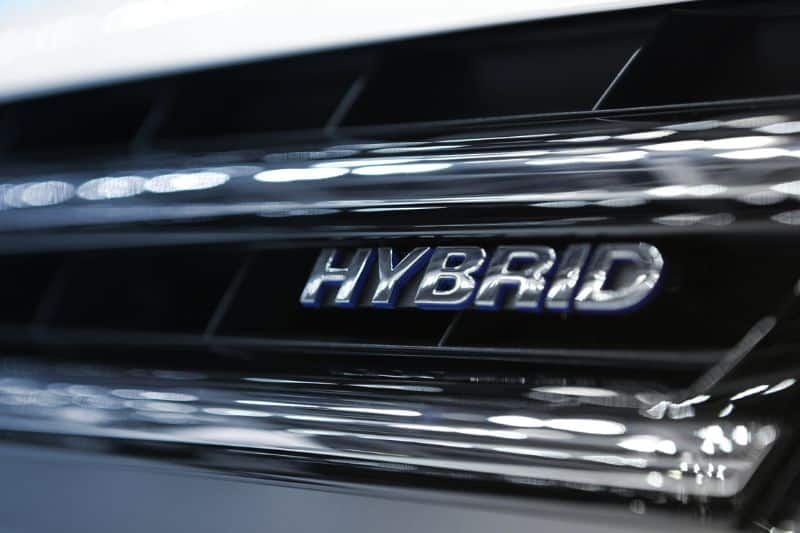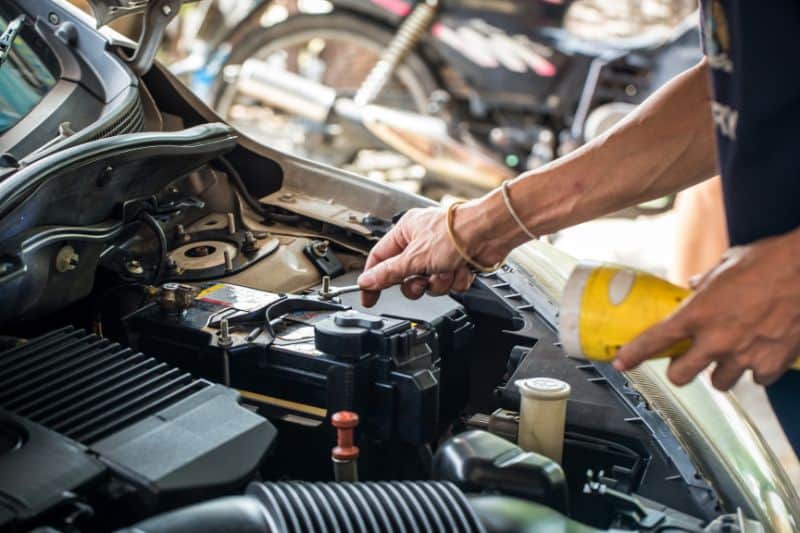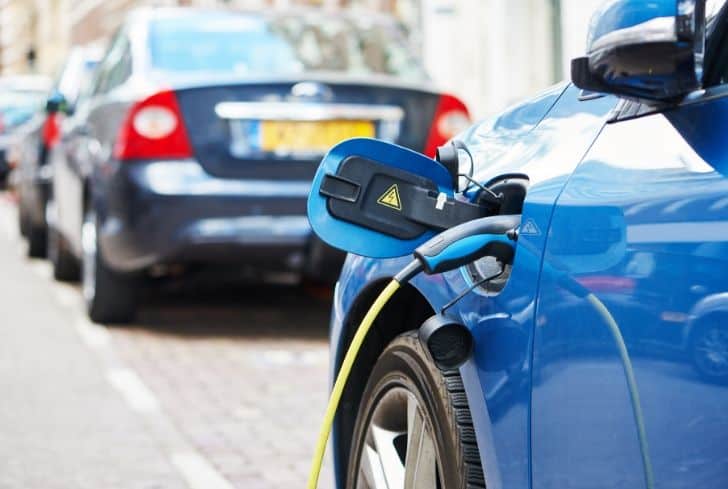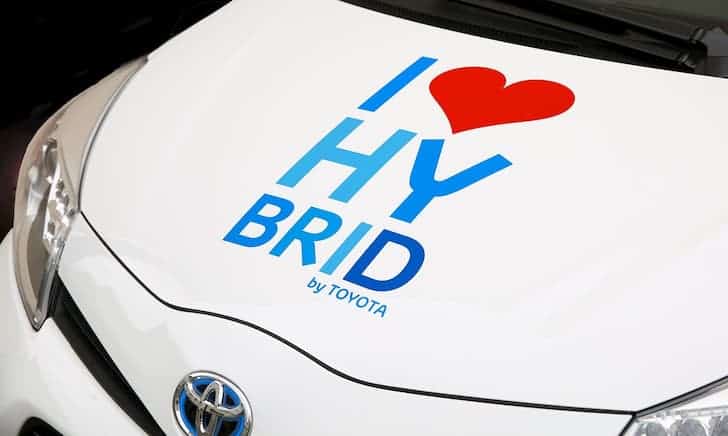Hybrid cars are becoming more popular and more common. Basically, a hybrid car is one that uses two or more engines, i.e., an electric motor and a conventional engine (either petrol or diesel).
The electric engine powers the car at lower speeds, and the gas engine powers it at higher speeds. That means hybrid cars conserve fuel and produce fewer CO2 emissions than regular options that purely run on gasoline.
Now, while hybrid vehicles are growing in popularity, few people are actually using them, mainly due to a lack of knowledge of how these vehicles work and whether or not they’re as good as their gasoline-powered counterparts.
In fact, this hybrid technology has existed since the early 1900’s, but it has only been in the past decade or so that the price of manufacturing them has brought them into the range of possibility for the average driver.
The growth of their awareness has also been exacerbated by the emergence of more government incentive programs that use credits and special discounts to support the purchase and use of hybrid vehicles.
Currently, many cities are switching their public transportation and service vehicles over to hybrid cars and buses as a part of their program to become more environmentally responsible.
Wikipedia defines a hybrid vehicle as,
“A hybrid vehicle uses two or more distinct types of power, such as internal combustion engine+electric motor, e.g. in diesel-electric trains using diesel engines and electricity from overhead lines, and submarines that use diesels when surfaced and batteries when submerged. Other means to store energy include pressurized fluid, in hydraulic hybrids.“
How Hybrid-Electric Vehicles Work?
Hybrid-Electric Vehicles (HEVs) combine the advantages of both the internal combustion engine (or gasoline engines if you like) and electric motors that use energy stored in batteries. The key areas of performance are regenerative braking, dual power sources, and less idling.
Hybrid electric cars work by charging the battery through regenerative braking and by the internal combustion engine, and not only by directly plugging in the vehicle to charge the batteries.
Through the electric motor and the battery, extra power is provided, which allows the use of a smaller engine and even provides auxiliary loads, which could reduce the engine’s idling. These features result in better fuel economy while maintaining great vehicle performance.
Hybrid electric cars work through the use of different key components. Some of them include:
- The auxiliary battery: It provides electricity to start the car before engaging the traction battery;
- The DC/DC converter: It converts the higher-voltage DC power from the traction battery to the lower-voltage DC power to run the vehicle accessories and recharge the auxiliary battery;
- The electric generator: This component provides electricity from rotating the wheels while braking, transferring the energy to the traction battery.
- The electric traction motor: This motor uses power from the traction battery to drive the wheels.
- The exhaust system: It is designed with a three-way catalyst to reduce emissions from the engine out through the tailpipe.
- The spark-ignited internal combustion engine: It allows air to combine with fuel and ignite by the spark from a spark plug.
- The power electronics controller: This part manages the flow of electric energy from the traction battery, allowing the control of the speed of the traction motor and the torque being produced.
Regenerate Braking
Unlike an electric vehicle (EV), a hybrid electric vehicle cannot be plugged in for the battery to charge. Instead, the battery is charged with the help of regenerative braking and by the internal combustion engine.
The electric motor powers the vehicle as well as resists its motion. When you apply the brakes to slow down, this resistance slows down the wheel and simultaneously recharges the batteries.
Dual Power
Power can come from the engine, motor, or both, depending on driving circumstances and whether the car is a full hybrid or mild hybrid.
Full hybrid cars operate using a combination of an internal combustion engine and an electric motor, although they don’t have to run concurrently.
When starting, the driver turns the ignition key or presses a button, activating the internal combustion engine. The engine then runs in parallel with the electric motor.
During acceleration, both power sources work together to provide optimal performance, and excess energy charges the battery.
When cruising at lower speeds, the hybrid car can switch to electric mode, relying solely on the electric motor for propulsion, minimizing emissions and fuel consumption.
Regenerative braking is a crucial feature; when the driver applies the brakes, the electric motor acts as a generator, converting kinetic energy into electrical energy to recharge the battery.
And that’s for full hybrids.
Mild hybrid cars operate with a less complex hybrid system compared to full hybrids.
When starting, the driver turns the ignition key or presses a button, activating the internal combustion engine.
However, unlike full hybrids, mild hybrid cars cannot solely rely on the electric motor for propulsion, as it does not have enough power to drive the vehicle independently.
During acceleration, the electric motor assists the internal combustion engine, providing extra power and reducing fuel consumption. The electric motor also acts as a generator during deceleration and braking, capturing energy that would otherwise be lost as heat and storing it in a small battery.
Automatic Start/Shutoff
The Automatic Start/Stop feature in hybrid cars automatically shuts off the engine when the vehicle comes to a stop, like at traffic lights or in traffic jams, to optimize fuel efficiency and reduce emissions.
The feature conserves fuel by eliminating unnecessary idling, and when the driver releases the brake or presses the accelerator, the engine quickly restarts to resume driving.
Essential systems, however, continue running through the battery or electric motor during engine shut-off.
As such, this technology is particularly effective in urban driving, as it helps reduce fuel consumption and emissions that would otherwise be produced during idle periods, making it more eco-friendly and fuel-efficient.

A hybrid car is best defined as a vehicle that has an engine that can switch between fossil fuel and an alternate fuel source. On the other hand, there are electric cars that use rechargeable batteries and have their advantages and disadvantages.
Advantages of a Hybrid Car
Here are a few of the top advantages of having a hybrid car:-
1. Environmentally Friendly
One of the biggest advantages of a hybrid car over a gasoline-powered car is that it runs cleaner and has better gas mileage, which makes it environmentally friendly.
A hybrid vehicle runs on a twin-powered engine (gasoline engine and electric motor) that cuts fuel consumption and conserves energy. Sure, it still uses gasoline, but the amount it needs to operate is significantly reduced.
2. Financial Benefits
Hybrid cars are supported by many credits and incentives that help make them affordable. Lower annual tax bills and exemption from congestion charges make running these cars generally cheaper than their pure gasoline-powered counterparts.
3. Less Dependence on Fossil Fuels
A Hybrid car is much cleaner and requires less fuel to run, which means fewer emissions and less dependence on fossil fuels. This, in turn, also helps to reduce the price of gasoline in the domestic market.
4. Regenerative Braking System
Each time you apply the brake while driving a hybrid vehicle, it helps you recharge your battery a little.
An internal mechanism kicks in that captures the energy released and uses it to charge the battery, which in turn eliminates the amount of time and need for stopping to recharge the battery periodically.
5. Built From Light Materials
Hybrid vehicles are made of lighter materials, meaning less energy is required to run them. The engine is also smaller and lighter, which also saves a lot of energy.
6. Assistance From Electric Motor
The electric motor assists the internal combustion engine in case of accelerating, passing or climbing a hill.
7. Smaller Engines
The gasoline engines in hybrid cars are usually small, light, and highly efficient as they don’t have to power the car alone.
8. Automatic Start and Stop
In hybrid cars, the engine is automatically shut off when the vehicle is idle and starts when the accelerator is pressed.
Compared to traditional hybrid vehicles, PHEVs can drive longer distances at higher speeds. Hydrogen fuel cell vehicles have lower energy emissions because they emit only water vapor and warm air.
9. Electric-Only Drive
Hybrid vehicles can be driven entirely on electricity. This usually happens while moving at low speeds, when the engine is idling at a stoplight, or when the engine starts up.
Normally, the internal combustion engine starts operating only at higher speeds, where it has more efficiency. This helps increase the overall fuel efficiency of the vehicle.
10. Higher Resale Value
With a continuous increase in the price of gasoline, more and more people are turning towards hybrid cars. The result is that these green vehicles have started commanding higher-than-average resale values. So, if you are unsatisfied with your vehicle, you can always sell it at a premium price to buyers looking for it.
There are many advantages to owning a hybrid car. The one thing you will like the best is how it helps control your budget as gas prices increase.
The other benefit that is not seen directly is how owning and driving a hybrid car impacts the environment. That’s because it reduces your dependence on fossil fuels and lowers your carbon imprint on the environment.
Disadvantages of a Hybrid Car
There are disadvantages to owning a hybrid car, but they are probably not what you think.
Contrary to the popular myth, hybrid cars have just as much power as regular cars and have no issues with mountain driving or towing. The disadvantages will depend on the type of hybrid fuel that your vehicle uses.
Here are a few of the disadvantages of a hybrid car:-
1. Less Power
Hybrid cars have twin-powered engines. The gasoline engine, which is the primary power source, is much smaller than what you get in single-engine powered cars, while the electric motor isn’t as powerful either.
The combined power is often less than that of a gas-powered engine. In fact, the power generated by this car is more suited for city driving and not for long-distance travel or applications where speed and acceleration are imperative.
2. Can Be Expensive
The biggest drawback of having a hybrid car is that it can burn a hole in your pocket. Hybrid cars are comparatively more expensive than regular petrol cars and can cost $5000 to $10000 more than a standard version. However, that extra amount can be offset with lower running costs and tax exemptions.
3. Poorer Handling
Incorporating both a gasoline-powered engine and a lighter electric engine, hybrid cars require powerful battery packs, which increase weight and consume additional space within the vehicle.
Unfortunately, the extra weight contributes to fuel inefficiency, prompting manufacturers to prioritize weight reduction. Consequently, they have downsized motors and batteries while providing less support in the suspension and body to counterbalance the added mass.
4. Higher Maintenance Costs
The presence of a dual engine and continuous technological improvements make it difficult for mechanics to repair the car, and the maintenance cost is also much higher. It is also difficult to find a mechanic with such expertise.

5. Accidents from High Voltage in Batteries
In an accident, the high voltage inside the batteries can prove lethal for you. There is a high chance of you getting electrocuted in such cases, which can also make the task difficult for rescuers to get other passengers and the driver out of the car.
6. Battery Replacement is Pricey
According to Green Car Reports, battery replacement in hybrid vehicles is currently rare. However, if a battery needs to be replaced, it can get pricey.
7. Battery Recycling Is Very Expensive
Once batteries pass their useful life cycle, they can be recycled to harvest usable materials for repurposing. This removes waste from the environment, which by the way, is a good thing.
However, the main issue with recycling lies in the recycling costs. Although lithium is 100% recyclable, extracting it costs too much, and sometimes economic gain may not adequately justify the effort put into the recycling process.
In fact, in most cases, lithium recycling is only done because of federal mandates and/or ecological purposes.
8. Hydrogen Fuel Cell Issues
The source of hydrogen can be both “clean” sources, such as solar or wind power, or “dirty” sources like coal and natural gas. Sourcing from coal and natural gas undermines the ecological motive for using hydrogen fuel cell vehicles.
Production of hydrogen is also expensive, and the fuel cells require refueling at a hydrogen station. At present, these stations are only located in California and near Toronto.
Making Your Decision
Deciding whether or not a hybrid car is right for you involves more than just a desire to be environmentally friendly. You have to look at the resources in your area necessary for maintaining and sustaining the car.
Consider the type of vehicle and its specific requirements. For instance, if you choose a hybrid or electric car, it’s crucial to find mechanics who are familiar with servicing these alternative fuel sources.
Changing Your Driving Habits
Even after purchasing a hybrid car, there’s still more to do to lessen your effect on the environment. One of the most important considerations is how you drive.
You can substitute many car trips with public transportation, carpooling, or bicycle riding.
Also, planning to use the car more effectively can reduce the overall number of trips you are making each week. Hybrid or not, the less you drive, the better it is for the environment.







